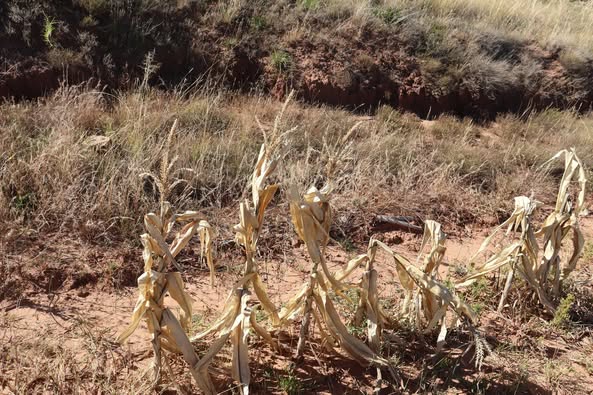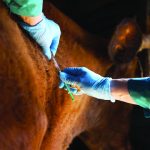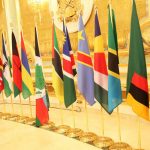![]()
Lesotho faces a staggering financial burden of over US$2.5 billion to deal with the harsh effects of climate change—a cost the country simply cannot afford to ignore.
This warning was delivered by Teke Ramotubei, Director of the Lesotho Meteorological Services (LMS), at a national climate action event where leaders, scientists, and development partners gathered to reflect on the country’s climate readiness.
Ramotubei stressed that failure to act decisively will only drive the cost of adaptation higher.
He warned that Lesotho’s fragile environmental and economic systems cannot withstand further delay.
Referring to alarming findings by the Intergovernmental Panel on Climate Change (IPCC), he noted that the world has already warmed by about 1.1°C. For Lesotho, that has translated into increased drought, erratic rainfall, floods, soil degradation, and outbreaks of disease.
“These are not future threats; they are already a part of the daily lives of Basotho, especially in rural communities where farming and food production depend heavily on predictable seasons.”
The LMS Director expressed concern that if global temperatures reach or exceed the 1.5°C threshold, the consequences would be devastating for countries like Lesotho.
“The country will struggle to meet its water needs, rainfall patterns will continue to deteriorate, and agricultural output will be severely affected.”
The directors noted that many communities already face recurring crop failures and food shortages.
“Our beautiful kingdom is already experiencing the worst of climate change, and without action, it will only get worse,” Ramotubei said.
He appealed to communities across the country to protect critical weather monitoring infrastructure, such as remote weather stations, which are often vandalised or neglected.
These instruments, he explained, are essential for forecasting, tracking, and understanding weather patterns and the climate itself.
“Without the data that we get from those stations, we do not have the weather. Without that data, we do not have the climate, and without that data, we do not have the climate change information needed to plan,” he said.
He added that the cost of replacing these instruments is too high for a country already under financial pressure.
The call for action resonated among other speakers, including Minister of Environment and Forestry, Letsema Adontši, who affirmed Lesotho’s policy commitment through its updated National Climate Change Policy 2027.
The policy has set out measures to reduce carbon emissions, strengthen food and health systems, build water resilience, and enhance climate financing.
Minister Adontši pointed out that while Lesotho contributes very little to global emissions, it is among the countries suffering the worst consequences.
“We are not the cause, but we are forced to carry the heaviest burden,” he said.
UN Resident Coordinator, Amanda Khozi Mukwashi, echoed these concerns and reminded the audience that the climate crisis is already here.
She emphasised that Lesotho has an opportunity to turn the crisis into a chance to lead on renewable energy, highlighting the country’s abundant sun, wind, and water resources.
“Lesotho has what it takes to become energy self-sufficient and a leader in sustainable innovation,” she said, urging stronger coordination between government, citizens, and international partners.
In the same meeting, Mofihli Phaqane, Chairperson of the National Climate Change Committee, highlighted the need to include everyone in the climate response—especially women, girls, people with disabilities, and rural communities. These groups often experience the harshest effects of climate change but are seldom part of the planning or solution-making. Phaqane emphasised that education, partnerships, and localised action are essential if Lesotho is to truly build climate resilience.
The impact of climate change on agriculture was also brought to the fore by Khotso Leaphean of the Lesotho National Farmers Union (LENAFU), who revealed that many farmers are abandoning their fields due to extreme weather. Erratic rains, prolonged droughts, and unpredictable seasons have made farming increasingly difficult, he said, raising serious concerns about national food security and nutrition. “We are seeing fewer young people entering agriculture. Some of our most experienced farmers are quitting. If we do not act soon, we will not be able to feed ourselves,” he warned.
This urgent conversation on climate resilience comes just one month after Lesotho was removed from the list of global food insecurity hotspots—a temporary relief that many experts agree is fragile. A recent announcement from the SADC Regional Vulnerability Assessment and Analysis (RVAA) programme revealed that more than 46 million people across seven Southern African countries, including Lesotho, are projected to face acute food insecurity in the 2025/26 consumption year. The regional report attributes worsening conditions to erratic weather, pest outbreaks, and economic shocks—many of which are climate-induced.
During the Annual Dissemination Forum of the SADC RVAA Programme held earlier in July, participants emphasised the need for harmonised vulnerability assessments to inform policy, investment, and emergency response. Despite data collection and funding challenges, seven SADC countries—including Lesotho—completed their national food security assessments, contributing to the regional report. The forum, supported by partners such as the FAO, WFP, and FEWS NET, highlighted the compounded effect of the 2024 El Niño-induced drought, persistent conflict in some parts of the region, and high food prices.
While the RVAA report acknowledges modest recovery in cereal production and grazing conditions in countries like Lesotho, Eswatini, and Tanzania due to favourable rainfall in the 2024/25 season, the broader picture remains troubling. FAO has pledged continued support to SADC Member States, including Lesotho, through technical assistance, digital data systems, and peer learning to improve the quality and use of food security assessments.
As one of the countries that just emerged from a critical food insecurity designation, Lesotho must now seize this moment to invest in resilience. The removal from the hotspot list should be seen as a wake-up call—not a time to relax. Unless urgent action is taken, Lesotho risks slipping back into a crisis that could have been prevented.
The climate emergency is not waiting. With proper planning, community involvement, and the right partnerships, Lesotho still has a chance to protect its people, its land, and its future. But as Ramotubei warned, “The costs of acting are high. The costs of doing nothing are far higher.”




